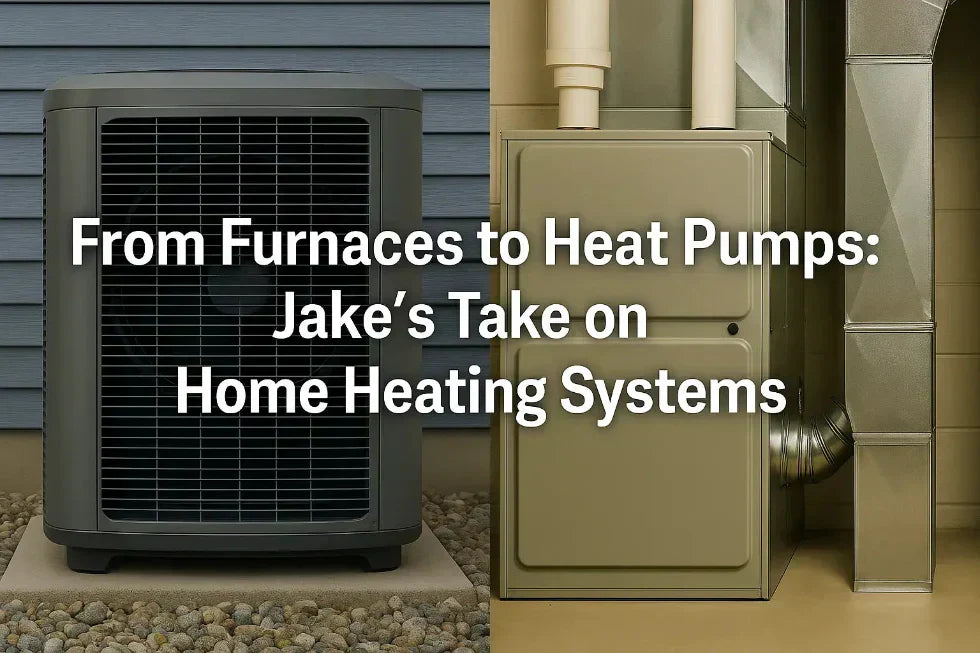🧔 Jake’s Intro: Heating Systems Made Simple
Hey, it’s Jake. When winter hits, nothing matters more than having a heating system that actually keeps your home warm without sending your energy bill through the roof. The problem? There are a ton of options out there, and the jargon gets overwhelming.
So let me cut through the noise. Whether you’re eyeing a classic gas furnace, a modern heat pump, or an electric heating system, I’m here to break down what you need to know. No fluff, just the facts to help you pick a heating system that works for your home.
🔥 Gas Furnaces: The Tried-and-True Workhorse
Gas furnaces remain the go-to heating system in many parts of the U.S. They burn natural gas to heat air and distribute it through your ducts.
👍 Pros: Strong heating power, relatively low fuel costs, and reliable even in very cold weather.
👎 Cons: Requires a natural gas line, needs regular maintenance, produces combustion gases that require venting.
Want to dive deeper? The U.S. Department of Energy has solid info on how gas furnaces work and what to expect from efficiency ratings.
⚡ Electric Heating Systems: Simple and Versatile
Electric heating comes in many forms: baseboard heaters, electric furnaces, radiant panels, and heat pumps. They convert electricity directly into heat, so they’re almost 100% efficient at the point of use.
👍 Pros: Easy to install, no combustion byproducts, excellent for smaller or well-insulated homes.
👎 Cons: Electricity can be pricey, especially in cold climates, so operating costs can add up.
For a thorough look at electric heating pros and cons, check out Energy.gov’s electric resistance heating guide.
🌬️ Heat Pumps: The Two-in-One Solution
Heat pumps are becoming a popular choice because they provide both heating and cooling. They work by extracting heat from outdoor air—even cold air—and moving it inside your home during winter. In summer, they reverse the process to cool your space.
👍 Pros: Highly efficient, especially modern cold-climate models, can replace both furnace and AC.
👎 Cons: Higher upfront cost, performance can dip in extremely cold temperatures.
Learn more about heat pumps and their benefits at ENERGY STAR’s heat pump page.
💧 Boilers & Radiant Heating: Quiet and Comfortable
Boilers work by heating water or producing steam that circulates through radiators or tubing embedded in floors, delivering gentle, consistent warmth throughout your home. Unlike forced-air systems, boilers don’t blow air around, which means less dust and allergens kicked up—making them a solid choice for allergy sufferers or anyone craving quiet comfort.
👍 Pros: Quiet operation, great for allergy sufferers since no forced air movement.
👎 Cons: No cooling function, higher upfront cost, space needed for tanks and piping.
If you want to dive deeper into how boilers and radiant heating systems work, the U.S. Department of Energy offers a comprehensive overview packed with practical info and tips for homeowners.
📐 Size Matters: Don’t Overshoot It
One of the biggest mistakes you can make is buying an oversized heating system. Oversized units cycle on and off too quickly (short cycling), waste energy, and don’t properly control humidity.
The pros use a Manual J load calculation to figure out the exact heating load your home needs. This calculation considers your home’s size, insulation, windows, and climate zone.
Want to see how it’s done? Check out this Manual J guide from Aircondlounge.com to understand the details.
💰 Cost and Efficiency Basics
Here’s a quick look at typical installed costs for common heating systems:
| Heating System Type | Installed Cost Range |
|---|---|
| Gas Furnace | $3,000 – $7,500 |
| Electric Heating Units | $1,500 – $5,000 |
| Heat Pumps | $4,000 – $12,000 |
| Boilers & Radiant Heat | $5,000 – $15,000 |
Energy efficiency ratings like AFUE for furnaces and HSPF for heat pumps are your friends. Look for ENERGY STAR® certified models to maximize savings.
⚙️ Smart Thermostats: Control Your Comfort and Bills
Pair your heating system with a smart thermostat to save around 8% on your heating and cooling bills, according to ENERGY STAR. Features like scheduling, geofencing, and remote control help fine-tune your comfort and cut waste.
🧰 Maintenance Tips for Longevity
Keep your system running smoothly by:
-
Changing filters regularly
-
Scheduling yearly professional tune-ups
-
Sealing duct leaks
-
Clearing outdoor units (for heat pumps)
Small habits = big savings and fewer breakdowns.
⚡ Comfort Circuit Breakdown
At the end of the day, picking the right home heating system comes down to understanding your local climate, your home’s size, and what fits your budget. Gas furnaces still rule when it comes to raw heating power and reliability in those freezing cold areas. Electric heating units shine in smaller homes or milder climates where ease and simplicity matter. And heat pumps? They’re the smart choice if you want year-round heating and cooling efficiency rolled into one.
Just remember: getting your system properly sized—like with a Manual J calculation—is crucial. Regular maintenance and pairing your unit with a smart thermostat can seriously boost comfort and trim energy costs.
If you’re thinking about how heating fits into the bigger picture of home comfort, I recommend checking out the Complete Guide to a 2.5 Ton Air Conditioner – Smart Cooling for Smart Homes. It’s a solid resource on balancing heating and cooling systems that work together efficiently.
Stay cozy, stay smart,
— Jake 🧔







